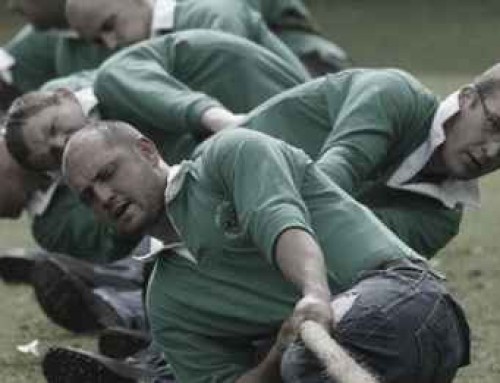By John J. Murphy
In 2009 I wrote a book titled, Beyond Doubt: Four Steps to Inner Peace. Originally, the book was intended to help people in all walks of life live with more presence, confidence, compassion, and abundance. It was the first book I wrote outside of the business and leadership genre, so I was surprised to learn a few years later that it was being used by a “sensei” (master teacher) at one of the world’s largest corporations to train business leaders how to lead with more compassion, wisdom, and grace.
In the book I describe four steps leading to “flow –a state of heightened awareness, appreciation, and performance. Athletes often refer to this elevated state as the “zone.” When we are in flow, we feel energized, optimistic, and alive. We feel aligned and in harmony with the life force moving through us, like riding a wave. We think more clearly and creatively. We develop healthier, more compassionate relationships. We attract more opportunities, support, and income. We experience a sense of timelessness, connectedness, and peak productivity. Flow is the natural state of emerging and thriving, like a flower blossoming. It is our essence to flow. Like a rose, we are meant to blossom.
The problem for most people is that “we get in our own way” and disrupt flow, often unconsciously. We tune into negative news. We close our minds to new ideas. We resist the natural, continuous flow of change. We make excuses. We point fingers. We criticize and judge the people and the world around us. We criticize and judge ourselves, overlooking the importance of self-love and self-compassion. Be aware of these tendencies. Negativity and resistance block flow the same way a valve shuts off water in your kitchen sink. Therefore, it is up to each one of us to open the tap and allow the miracle of life to flow through us unto others. This is what leading with compassion is all about.
Four Mindful Steps:
The four steps to leading with compassion work together in a dynamic that cannot be separated. In other words, any one step can negate them all. Use these four steps first on yourself and then with others to deepen your understanding of circumstances and strengthen your relationships. People around you will notice a difference and will appreciate it.
1. Let Be. This first step is all about being present and paying attention. People appreciate it when you look them in the eyes, refer to them by name, and listen with empathy and sincere interest. Make yourself a list of personal commitments that begin with the word Be and commit to practicing them daily until they become a habit. For example, be available. Be considerate. Be open. Be contemplative. Be genuine and sincere. Be positive. Be supportive. Be helpful. Be forgiving. Consider how you want to be remembered and demonstrate it. Define your character and be it.
2. Let Go. This step challenges us to take inventory of anything weighing us down–mentally, emotionally, physically, financially, socially, and spiritually–and then let it go. It is essential to open the tap, release resistance, and allow flow. As you might well be aware, the untrained mind loves to jump around. It feeds on drama and comparison and judgment. It thrives on duality and right-wrong, us-them, win-lose thinking. The untrained mind is motivated by fear, leaving people swimming in anxiety and doubt. This step challenges us to recognize that fear is an illusion–a projection of the mind that something negative is going to happen. It is all based on assumptions. Why not assume something great is going to happen? Take inventory of anything weighing you down, including flawed assumptions and limiting beliefs. Then consider using this step to uncover obstacles and barriers to others’ manifestation of flow. What is holding them back? What is weighing them down? Be present. Be attentive. And be helpful in removing obstacles. We all have them. This is an expression of sincere compassion.
3. Let See. It is interesting to witness how people begin to “see” things differently when they learn to let be and let go. Suddenly, that person who was annoying is seen in a different light. Maybe they were suffering with anxiety, frustration, confusion, or quiet discontent. Can you relate? We are all human, and we all experience a plethora of thoughts and feelings. Find the connection. Seek to understand and see with empathy. What is it like to be in someone else’s shoes? What struggles do they have? What obstacles do they face? Be present, be open (Let Go), and see the world anew.
4. Let Flow. Step four is the natural state of flow I began this article with. It is a state of heightened awareness, appreciation, and performance. In fact, it often feels timeless and effortless. To achieve this state of being, we must see it (Step 3). We must visualize it and believe. This challenges us to look beyond the chaos and negativity in the world to the beauty, harmony, and grace that coexists. We cannot have day without night. We cannot uncover solutions without problems. The duality of the world gives us contrast and perspective. To be at peace in the world, we must focus on peace–letting go of negativity, grief, and doubt. Let be, let go, let see, and let flow.
Notice that all four steps in this model begin with the word Let. This means that it is within our power to allow and align with flow. We do not need permission to be present, to let go of the things weighing us down, to see with heightened perspective and vision, and to prosper as we are meant to prosper. We simply need to look upon ourselves and the people around us with more presence, awareness, and compassion.
Leaders who mindfully pay attention, challenge limiting beliefs and assumptions, remove obstacles, exercise positive vision, and demonstrate poise are leaders people want to work for. In these times of uncertainty, despair, and the “Great Resignation,” there is hope. Let that hope be you.
John J. Murphy is an award-winning author and the founder and CEO of Venture Management Consultants, Inc. a firm specializing in transformational culture change, mindful leadership, Operational Excellence, and high-performance teamwork.






Leave A Comment